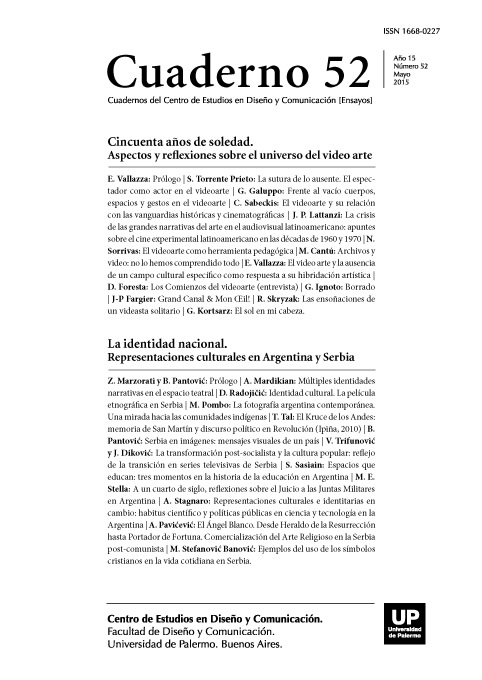Ejemplos del uso de los símbolos cristianos en la vida cotidiana en Serbia
Abstract
The return to religion after decades of secularism and rationalism has brought
new religious practices to the social and cultural life in Serbia. These transformations, in
certain aspects, including the return to the pre-socialist religious tradition and to a large
extent, created new guidelines that seek to integrate into the old traditional context. As a
result, many practices are hybrid, which probably become more noticeable in the examples of material culture, as the most common manifestation of religiosity.
One of the most important features of this process is the overproduction of objects with
christian symbols. Orthodox Christian iconography used in common products with emphasis on materials and aesthetic values, which is completely opposite to the Christian essence.
This paper will present examples of a new perception of religious culture material, which
includes the marketing of religious customs, excessive public displays of religiosity, the
identification of national identity and Christian, and a general shift of focus from the
spiritual toward the material.
References
Berger, P. (1999). The Desecularization of the World: Resurgent Religion and World Politics.
Michigan: William B. Eerdmans Publishing Company.
Bourdieu, P. (2004). Science of Science and Reflexivity. Chicago: The University of Chicago
Press.
Elliade, M. (2003). Sveto i profano [Lo sagrado and lo profano]. Traducción de francés a serbio
por Zoran Stojanović. Sremski Karlovci - Novi Sad: Izdavačka knjižarnica Zorana
Stojanovića. (Título original: Le Sacré et le Profane. Paris: Éditions Gallimard. 1972.)
Eriksen, T. H. (2004). Etnicitet i nacionalizam [Ethnicity and Nationalism]. Traduccion de
inglés a serbio por Aleksandra Bajazetov-Vučen. Belgrado: Krug. (Título original: Ethnicity
and Nationalism. Virginia: Pluto Press, London&Sterling. 2002.)
Kalezić, D. (1992). Krsne slave u Srba [Los santos patronos de las familias entre los serbios].
Belgrado: Neven.
Smith, A. D. (2010). Nacionalni identitet [Identidad nacional]. Traduccion de inglés a serbio
por Slobodan Đorđević. Belgrado: Krug. (Título original: National identity, Penguin
Books. 1991.)
Šućur, Dragan. (2009). Banjalučka eparhija za vreme episkopa dr Vasilija (Kostića): 1947-
[Diócesis de Banja Luka en tiempo del obispo dr. Vasilije (Kostić): 1947-1961]. Banja
Luka: Svetosavska omladinska zajednica SPC Eparhije banjalučke.
Los autores/as que publiquen en esta revista ceden los derechos de autor y de publicación a "Cuadernos del Centro de Estudios de Diseño y Comunicación", Aceptando el registro de su trabajo bajo una licencia de atribución de Creative Commons, que permite a terceros utilizar lo publicado siempre que de el crédito pertinente a los autores y a esta revista.


